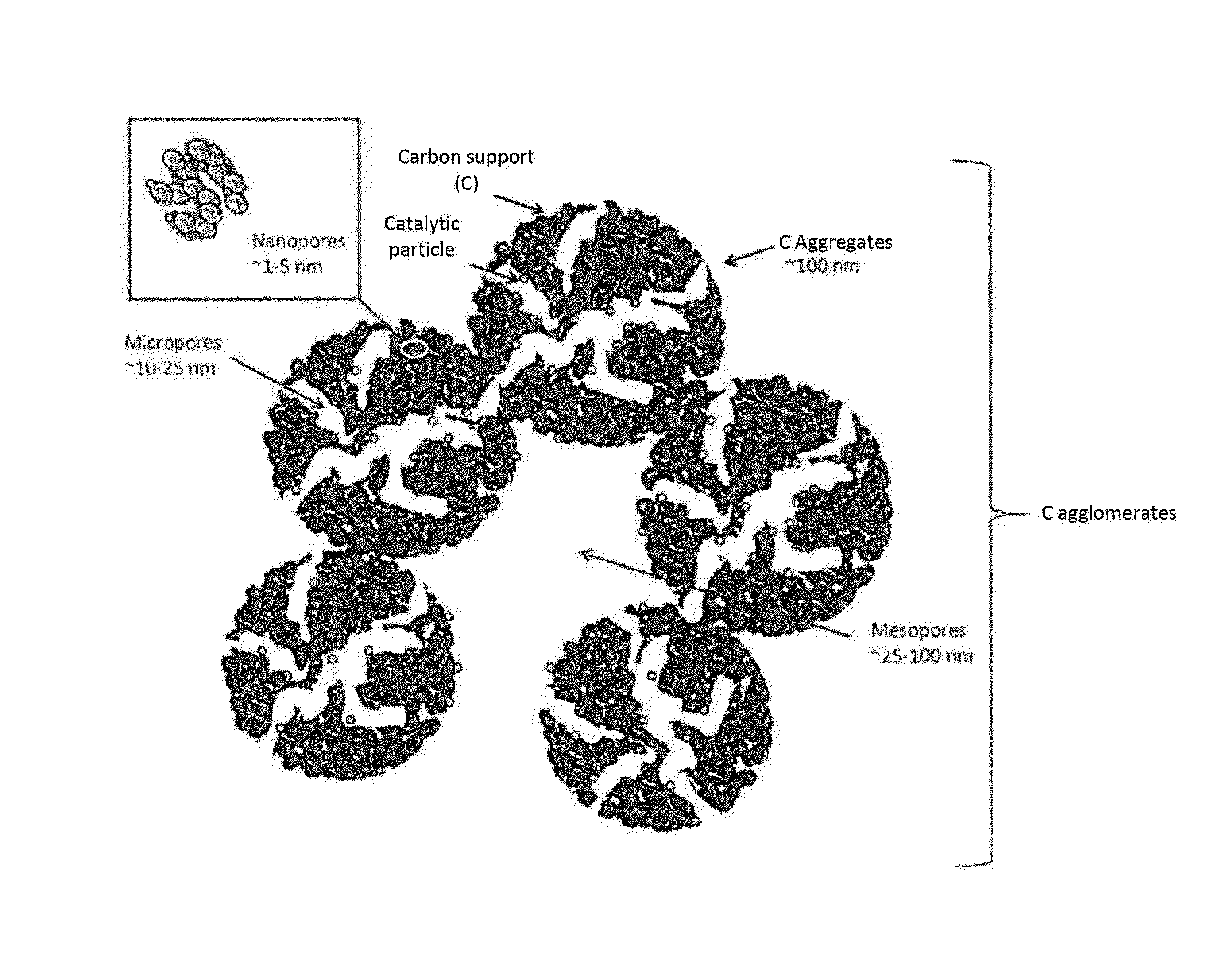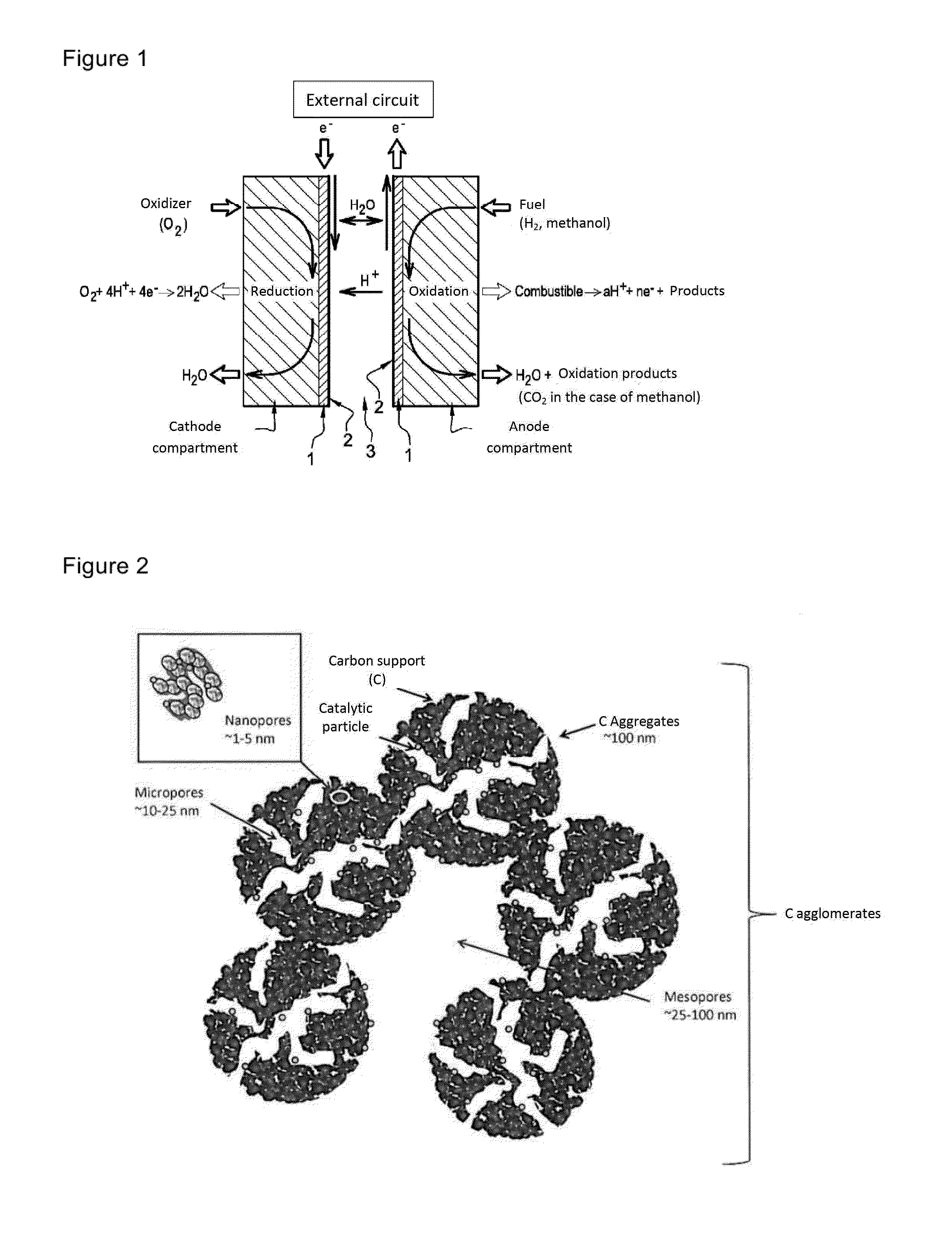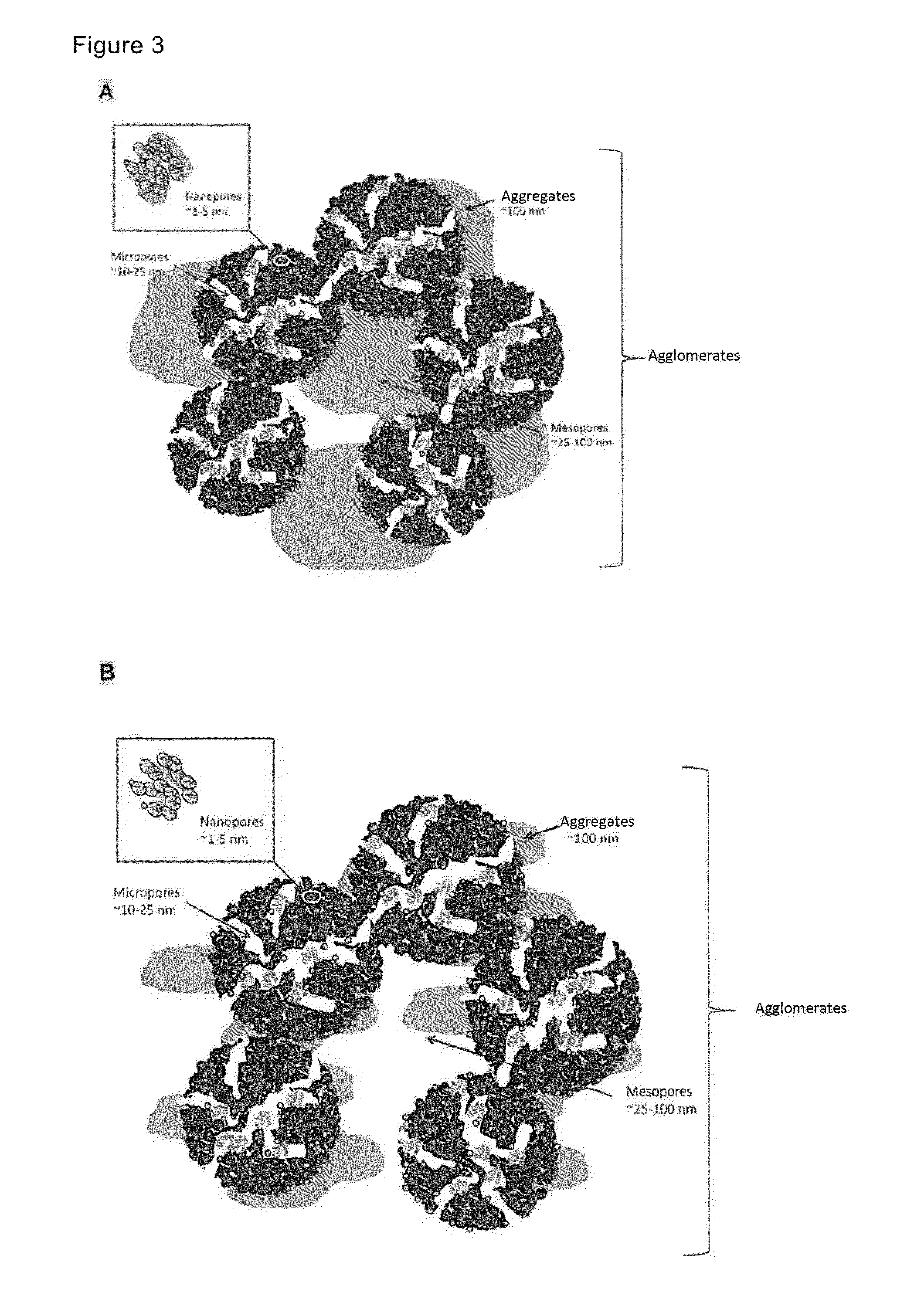Proton-exchange membrane fuel cell electrode structuration
a technology of protons and fuel cells, applied in fuel cells, nanotechnology, coatings, etc., to achieve the effects of reducing electrode porosity, limiting oxygen diffusion, and increasing hydrophobic character of active layers
- Summary
- Abstract
- Description
- Claims
- Application Information
AI Technical Summary
Benefits of technology
Problems solved by technology
Method used
Image
Examples
embodiment
OF EMBODIMENT
[0063]The foregoing features and advantages of the present invention will be discussed in the following non-limiting description of the following embodiments in connection with the accompanying drawings.
[0064]FIG. 1 shows the simplified operating diagram of a PEMFC fuel cell.
[0065]FIG. 2 shows the diagram of the structure of a PEMFC fuel cell electrode.
[0066]FIG. 3 illustrates the lesser capacity of an electrode according to the present invention to flood (B) and to cause the electrochemical aging of the catalytic nanoparticles and the degradation of the carbon support. FIG. 3B illustrates an MEA according to the present invention containing less platinum than the MEA shown in FIG. 3A.
[0067]Six membrane-electrode assemblies (MEA [1] to [6]) have been prepared and tested.
[0068]The test results (response of the cell potential along time) are illustrated in FIGS. 4 to 9.
[0069]FIG. 10 shows the variation of the voltage and of the current density along time for a fuel cell c...
PUM
| Property | Measurement | Unit |
|---|---|---|
| thickness | aaaaa | aaaaa |
| thickness | aaaaa | aaaaa |
| electromotive force | aaaaa | aaaaa |
Abstract
Description
Claims
Application Information
 Login to View More
Login to View More - R&D
- Intellectual Property
- Life Sciences
- Materials
- Tech Scout
- Unparalleled Data Quality
- Higher Quality Content
- 60% Fewer Hallucinations
Browse by: Latest US Patents, China's latest patents, Technical Efficacy Thesaurus, Application Domain, Technology Topic, Popular Technical Reports.
© 2025 PatSnap. All rights reserved.Legal|Privacy policy|Modern Slavery Act Transparency Statement|Sitemap|About US| Contact US: help@patsnap.com



